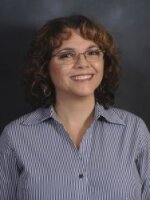The University of West Florida is wrapping up its 2016 Summer Archaeology Field School.
In addition to their work exploring the Luna shipwrecks at Emanuel Point, UWF staff and students have spent the past 10 weeks looking for more clues about the recently discovered 1559 Luna Settlement site. Earlier this month, WUWF checked in to see how the project was progressing.
On this day, several members of the UWF Archaeology team are working in the yards of two homes that sit on the bluff, with a picturesque view of Pensacola Bay, not far from the shipwrecks. One of the homes is under construction.
"My name is Samantha and I am screening the level we just excavated," said junior Samantha Krisko. She's set up operation at the edge of the property, sifting through the soil for the tiniest of items.
"We try and save all the oyster shells, since we’re excavating a shell midden and anything that looks like it’s man made," Krisko said. "So, pieces of pottery, bone, we keep, pieces of glass, and if there’s any lead shot, we try to keep that, but it’s usually pretty small, which is why we use the screens to catch it."
Krisko says studying archaeology is a natural fit for her. She enjoys being outside and likes history. And, she's aware of the significance of their work to find out more about Tristan de Luna’s colonization attempt over 450 years ago.

"It’s definitely important to be able to piece together the history with what we find here and figure out exactly what went on, while they were here," she said.
The soil that’s being screened is coming two large excavation pits across the yard.
In them, other archaeology students are crouched down, carefully scraping away soil and sweeping it up for the screening process. The work is being done under the watchful eye of grad student Michael DuBose, an archaeology supervisor-in-training.
"We’re trying to catch all the dirt that fell off this unit that we’re working on here," said DuBose. "That’s why we have tarps, so we’re scooping up all the dirt that just fell and from the shoveling, so we don’t miss anything."
Dr. Ramie Gougeon is associate professor of Anthropology at UWF and leads the terrestrial portion of the field school.
"We started digging in this area because of shovel tests that encountered positive oyster shell,” Gougeon said. "And, we know from previous excavations in the Pensacola area that these little oyster middens are fantastic places for artifacts to be preserved and held relatively intact in the soil column, so they resist movement vertically down through the sand."
At this location, the archaeology team established a couple of units that revealed two different shell middens, each containing a mix of oyster and shellfish remains and fish bones. Their goal is to determine how big these middens are, what artifacts were captured in them, and how far apart in time the two deposits are.
According to Dr. Gougeon, the northern-most one had a smattering of colonial materials on top, some of which he believes to British and some possibly related to Luna.
"But, within the two shell piles themselves, most of the material seems to be late pre-historic, native American" said Gougeon, pointing out that they're seeing ceramics that are tempered with shell, others tempered with sand or grog, and incisions or designs on the pottery that indicate it may be late pre-historic.
Dr. Gougeon says it’s important to record what they’re finding both horizontally and vertically. This way they can see – not only - how far the shells extend, but also if they’re lying in a pit or on the original surface of the ground, and whether they’re mounded up or spread around.
"And, some of these variables can tell us something about what the people who made these deposits were thinking" Gougeon said. "Was this a long term site? Was this just a quick snack on the side of the bay? Were they here for a long time or was this a short term process."
And, even with few colonial artifacts in these particular shell middens, Gougeon says the Luna Settlement project is revealing clues about the native people who were here before Luna arrived in 1559.
Dr. Elizabeth Benchley is director of the UWF archaeology program. Elsewhere on the property, she’s been tracking a series of excavation pits where they’ve found evidence of some sort of wall or fence, about 25 meters thus far.

"Of course, we would want it to be a Luna trench and it could have been, but this wouldn’t have been an area where the Luna colony stored or cooked food," said Benchley, pointing out that they didn't find enough broken pottery in the area overall and none in the trench itself.
Dr. Benchley says they think the warehouse was located at the very first Luna site investigated last fall.
While this year’s archaeology field school is ending, Benchley says shovel testing for the settlement’s boundaries will be ongoing to help inform their decisions about where to excavate when the team returns to the site next year.
"The shovel testing can reveal if there are pit features present," Benchley said. "We might be lucky and hit one."
Stay tuned.





